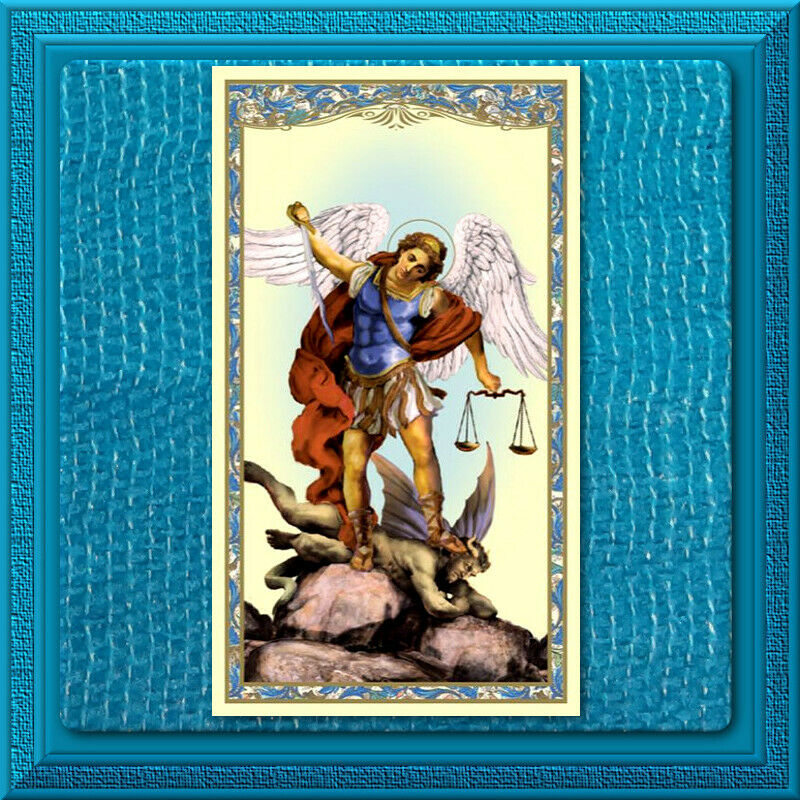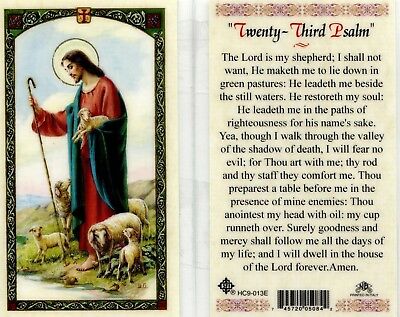-40%
Holy Card of Saint Gertrude the Great Plus a 1" Silver Oxidized Medal
$ 2.37
- Description
- Size Guide
Description
Laminated Holy Card of Saint Gertrude the Great Plus a1" Silver Oxidized Medal of Saint Gertrude.
Condition is New. Shipped with USPS First Class Package.
This exceptionally detailed die-cast medal, with Saint Gertrude the Great on the front and Pray for Us on the back, is made in the region of Italy that produces the finest quality medals in the world. The silver oxidized finish has been perfected for hundreds of years by the local Italian craftsmen, and remains unmatched in quality, beauty, and longevity throughout the world -a genuine silver plating with a 3-dimensional depth, and long-lasting brilliance. Measures approximately 1 inch in height - attached jump ring is included.
Gertrude
the Great
was a German Benedictine nun, mystic, and theologian. She is
recognized as
a saint by the Catholic Church, and is inscribed in the General
Roman Calendar
, for optional celebration throughout the Roman Rite as a memorial,
on November
16.
Little
is known
of the early life of Gertrude. Gertrude was born on the Feast of
the Epiphany
, January 6, 1256, in Eisleben, Thuringia. At the age of four,
she entered
the monastery school at the monastery of St. Mary at Helfta, under
the direction
of its abbess, Gertrude of Hackeborn. It is speculated that she was offered as a child oblate to the Church by devout parents. Given that Gertrude implies in the Herald that her parents were long dead at the time of writing,however, it is also possible that she entered the monastery school as an orphan.
Gertrude was confided to the care of Mechtilde, younger sister of the Abbess Gertrude, and joined the monastic community in 1266. It is clear from her own writings that she received a thorough education in a range of subjects. She, and the nun who authored Books 1 and 3-5 of the Herald, are thoroughly familiar with scripture,the Church Fathers such as Augustine and Gregory the Great, and also in more contemporary spiritual writers such as Richard and Hugh of St Victor, Williamof St Thierry, and Bernard of Clairvaux. Moreover, Gertrude's writing demonstrates that she was well-versed in rhetoric, and her Latin is very fluent.
In 1281, at the age of 25, she experienced the first of a series of visions that continued throughout her life, and which changed the course of her life. Her priorities shifted away from secular knowledge and toward the study of Scripture and theology. Gertrude devoted herself strongly to personal prayer and meditation,and began writing spiritual treatises for the benefit of her monastic sisters.Gertrude became one of the great mystics of the 13th century. Together with her friend and teacher Mechtild, she practiced a spirituality called "nuptial mysticism," that is, she came to see herself as the bride of Christ.
Gertrude died at Helfta, near Eisleben, Saxony, around 1302. Her feast day is celebrated on November 16, but the exact date of her death is unknown; the November date stems from a confusion with Abbess Gertrude of Hackeborn.











